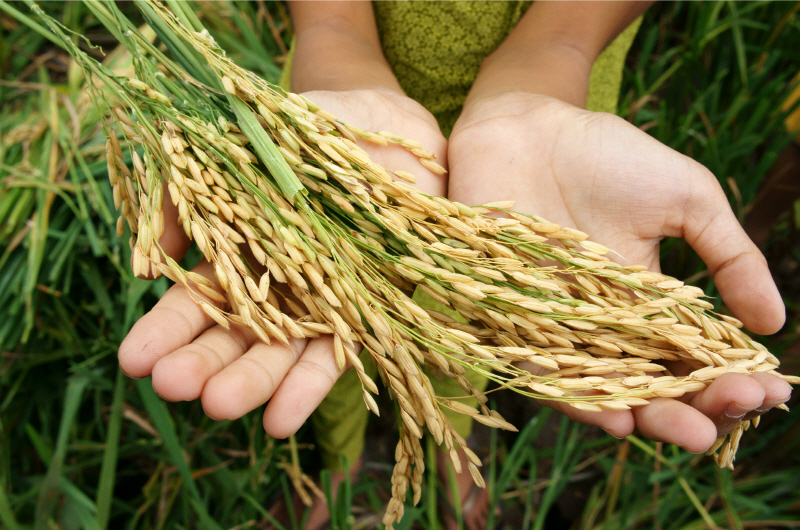
Satisfying hunger through meals is an act of survival as well as a most basic and important human right. However, even in this day of abundance, approximately 9 percent of the world’s population of about 700 million people are suffering from hunger. That number is increasing by more than 10 million people every year.
Why does this happen?
ㅡ
Food security means having access to sufficient food
ㅡ
Food self-sufficiency is decreasing worldwide. A major cause is that after the industrial revolution, industries moved from primary to secondary and tertiary industries, reducing agricultural area and labor worldwide. As a result, the food self-sufficiency rate has dropped dramatically in many countries as they started to depend on imported foods. The high dependence on foreign countries’ food export will be fatal if the exporting country decides not to export food.
As each country’s food self-sufficiency drops, food security can become a national security issue. Food security means, that a country must always maintain an adequate food supply for its people even during special circumstances such as population growth, natural disasters, and war.
After the 2008 global food crisis, food security became an even more important issue for the international society. A global recession started following the financial crisis that began in the United States in 2007, and global food prices surged over the next two years.
The surge in food prices had a fatal impact especially on developing countries in Asia and Africa, and food riots broke out in more than 40 countries around the world. Those who could not buy food due to the high food prices in countries such as Algeria, Mexico, the Philippines, Haiti, and Egypt protested the government. Food had caused national security to be weakened.
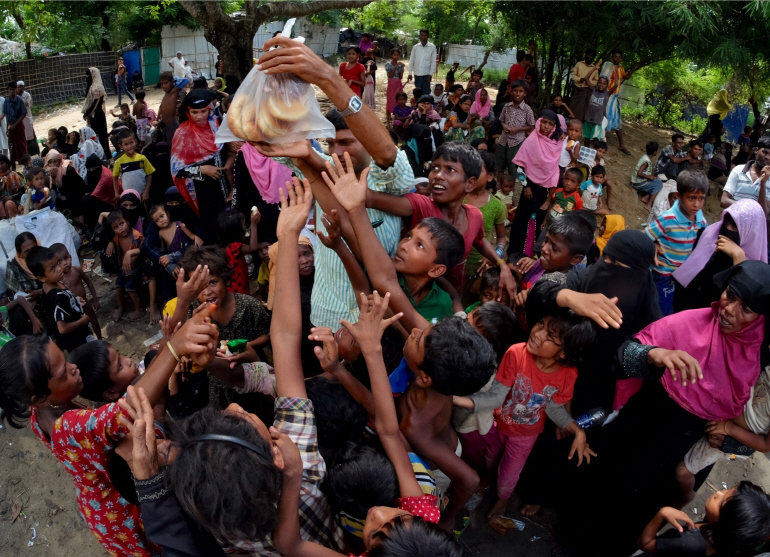
△ On October 8, 2017, the Rohingya people are reaching out to grab free bread held out by a man in Bangladesh.
ㅡ
Reasons food crises occur
ㅡ
Food security occurs due to the intertwining of multiple causes.
l Continuous increase in world population
The world population exceeded 3 billion in the 1960s, and since then, it has steadily increased by about 1 billion every 10 years, surpassing 7.8 billion in 2020. If this trend continues, the world population is expected to reach 9 billion by 2050. The top countries contributing to the growth in the world’s population are mostly developing countries in Asia and Africa, which are also the most vulnerable countries in terms of food security.
l Weather variation and water shortage
Over the past 100 years, the Earth’s temperature rose by about 1℃. If the use of fossil fuels continues at the current pace, the average global temperature is expected to rise by about 6.4℃ at the end of this century. Given the climate-dependent nature of agriculture, climate change is taking a heavy toll on crop growth, with increasing uncertainty in agricultural production due to frequent floods, droughts, massive typhoons, and tidal waves.
l Increase in meat consumption
The global community has become a fan of delicious meat and dairy products, and now consumes a huge amount of meat. The increase in meat consumption leads to a higher demand for grain. About 7~8 kilograms of grain are needed to produce 1 kilogram of beef. The consumption of grain as animal feed accounts for more than 40% of the world’s grain production.
l Increase in biofuel usage
Bioethanol is a fuel made by fermenting starch crops such as sugar cane, wheat, corn, potatoes, and barley that is used as a fuel additive in vehicles. Producing enough bioethanol for a medium-sized car requires an amount of corn a person can eat for a year. As a huge amount of corn gets used to produce bioethanol, the amount available for human consumption will inevitably decrease.
ㅡ
If grain prices rise, commodity prices also rise
ㅡ
The price of grains such as wheat and soybeans rose to 2 to 3 times higher in 2008. The rise in food prices led to a rise in commodity prices, which further led to global inflation. Such a phenomenon is called agflation.
The global economy is greatly intertwined, and so an economic crisis and inflation that start in one country can have a great impact on other countries.
What is agflation?
Agflation is a new term that combines the terms agriculture and inflation to describe the phenomenon of commodity prices rising due to the rise in grain prices.
This term was first introduced in the magazine Economist and has been widely used since then.
Food insecurity due to agflation has led to riots and national crises in countries such as the Philippines, Indonesia, Bangladesh, Egypt, Mexico, and Haiti. The issue of food security has become much more important than before.
ㅡ
28 of the 48 countries in Africa are in a state of severe food insecurity
ㅡ

△ Children are receiving food distribution at a school in Rusinga, Kenya, October 23, 2016
How serious is the hunger problem? The Global Hunger Index (GHI) is a tool designed to comprehensively measure and track hunger at global, regional, and national levels. It measures a country’s state of hunger on a 100-point scale. A GHI score of zero means that a country has no undernourished person in its population. A GHI score of 100 means that a country’s entire population is experience hunger.
According to the 2020 Global Hunger Index report, the worldwide GHI score was 18.2, down from a 2000 GHI score of 28.2. Also, of the 48 countries in Africa, 28 countries are at a serious level of hunger and 8 countries are at an alarming level of hunger. In other words, 75% of the countries in Africa are experiencing a serious level of hunger.
ㅡ
International efforts for food security
ㅡ
The United Nations Sustainable Development Goal 2 is to bring the number of people who suffer from hunger to zero. As a foremost goal, the UN is working towards zero hunger.
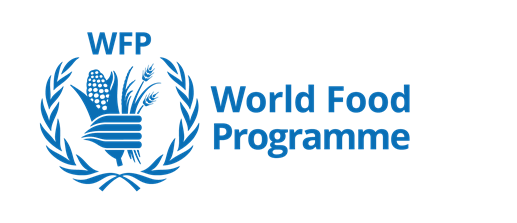
The World Food Programme (WFP) is the world’s humanitarian organization focused on emergency relief, relief and reconstruction projects, and special response projects aimed at achieving zero hunger where no one suffers from a lack of food. The WFP is providing critical humanitarian aid to fight hunger at a time when the logistical flow of supplies has been blocked due to the spreading of COVID-19.
What is the World Food Programme?
Established in 1961, the WFP is the largest humanitarian organization focused on eradicating hunger through food assistance. The WFP, which operates offices in more than 80 countries around the world, helps nearly 100 million poor people in 88 countries each year. Currently, there are 36 State Members in the WFP’s Executive Board. The Republic of Korea has been participating as a board member since 2011.
The WFP was awarded the Nobel Peace Prize "for its efforts to combat hunger, for its contribution to bettering conditions for peace in conflict-affected areas, and for acting as a driving force in efforts to prevent the use of hunger as a weapon of war and conflict." The Nobel Committee, in selecting the WFP for the Nobel Peace Prize, said, "Until the day we have a medical vaccine, food is the best vaccine against chaos."
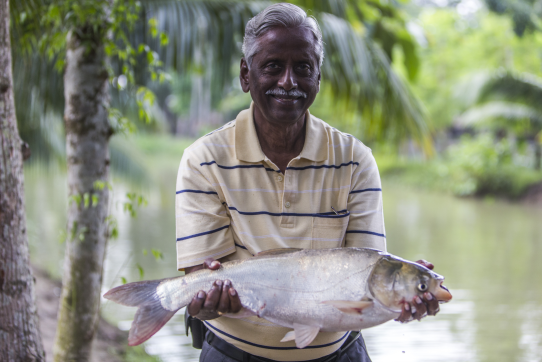
Among the Sunhak Peace Prize laureates, Dr. Modadugu Gupta, the co-recipient of the inaugural Sunhak Peace Prize in 2015, has also dedicated himself to combating the global food crisis.
Dr. Modadugu Gupta is a fisheries scientist who dramatically increased fish production and laid the foundation for the Blue Revolution. Risking his life to work in conflict areas, Dr. Gupta developed low-cost aquaculture technology that has emerged as a possible solution to address the looming food crisis due to population increase and climate change-induced rise in food price
ㅡ
Food security can be strengthened through alternative foods and agricultural innovation
ㅡ
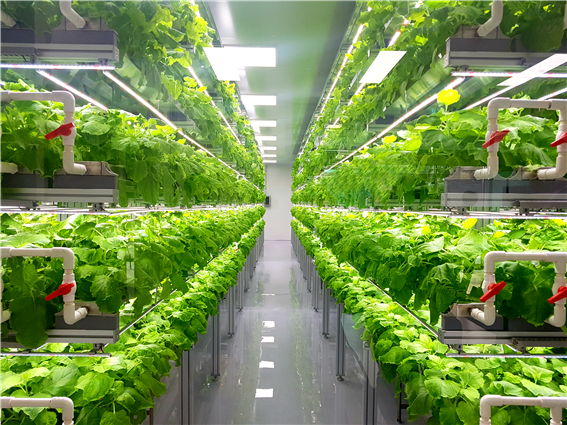
Through efforts to attain a stable food supply, there have been impressive developments in alternative foods and agricultural technology. The price of lab-grown meat obtained by indefinitely multiplying meat muscle cells has decreased significantly since its first introduction, and lab-grown meat is expected to become widely available. Also, plant-based meat and edible insects are rising as an alternative food due to their high productivity and high-quality protein content.
New agricultural technology is also developing. A vertical farm uses urban high-rise buildings as agricultural land and can artificially control all conditions that affect farming (temperature, humidity, light, water, etc.) so that crops can be produced year-round regardless of the weather.
Digital agriculture, which increases agricultural productivity by using technologies such as the internet of things, drones, and satellites, is also growing rapidly. By using drones and satellites to check the cultivation process and situation in real-time, a supply and demand plan can be made for the cops. These technologies can also be used to determine the appropriate time to use pesticides. By using less water and less pesticide through such technology, it will be possible to produce higher price agricultural products at lower costs.
Securing a stable supply of food has been an important and long-standing task for humanity since human history began. Having food to eat at each meal to avoid hunger is not only an act that satisfies a basic human need but also a basic human right. Despite remarkable scientific advancement, two billion people around the world are still struggling to secure food. The global community needs to work together to solve the food crisis.
ㅡ
We need to create a world where no one is hungry
ㅡ

